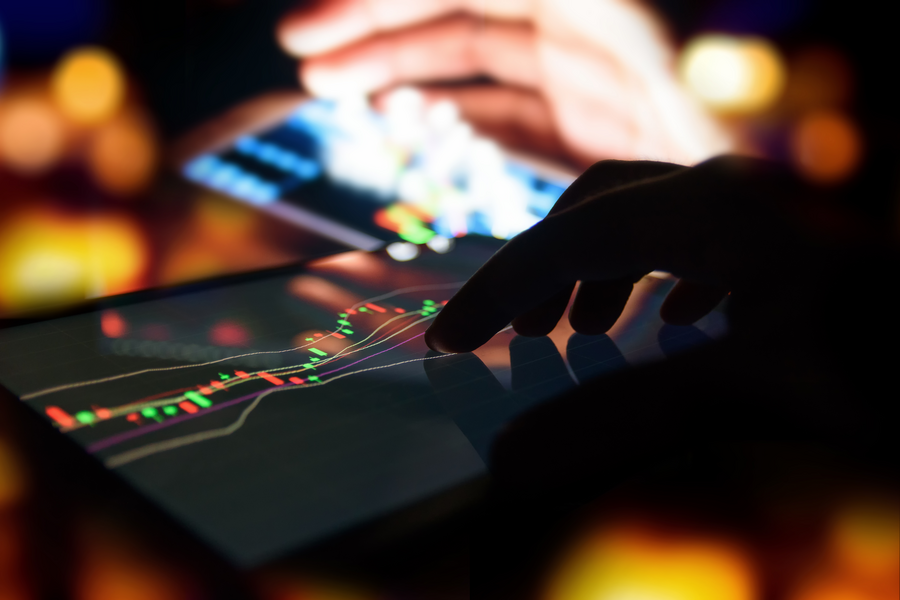
As industries grow and the companies that compose them start to trade, marketplaces (most commonly known as exchanges) need to evolve and develop different functionalities to facilitate efficient capital allocation. Providing asset information and infrastructure as well as hedging possibilities like futures and options trading is the starting point for any successful exchange [1]. On this occasion we would like to explore one of these functionalities: margin trading.
What is margin trading?
Is margin trading a sophisticated strategy reserved only for experienced traders and institutional desks? Well, not quite. When thinking about margin trading, one should think borrowing. Although there are quite complicated strategies that can be done with it, at its core, day margin trading can be boiled down to asking for assets (mostly cash), and later repaying it.
Let’s say one wants to buy US$10,000 worth of a stock, but only has US$ 6,000. One option would be to simply buy the maximum amount, even if it’s not an efficient allocation (for diversification purposes, for example). The second option would be to ask for the remaining US$ 4,000, and return it (plus interest accrued, assuming no applicable commissions) later on.
Benefits of margin trading
Of course, there are many advantages provided to the users of margin trading, and can be mainly categorized by users, and markets-as-a-whole benefits. The latter are enjoyed by all actors, not only margin traders.
|
Users |
Market |
| Magnifying results. Through leveraging a position (borrowing to buy more than one could otherwise), there is an opportunity for improved return (profits). | Liquidity. Studies on stock markets have shown that liquidity is higher when stocks become eligible for margin trading and that this liquidity enhancement is driven by margin traders’ contrarian strategies [2][3]. |
| Bear markets. Shorting (borrowing an asset and selling it, and later returning it having re-bought it at a new price) provides an excellent possibility to take advantage of markets (or assets) in downward trends. Instead of only gaining when an asset appreciates in price, one can also benefit when it’s decreasing. | Price discovery. Although it’s not an open and shut case, many academic papers have encountered that counting with margin trading mechanisms (like intensified short selling) can help in the price discovery process, making it more efficient [4]. |
| Diversification. Diversification benefits can be reaped from margin borrowing when original funds are not enough to position yourself in a large variety of assets because of its price or minimum buy-in. One can also act as lender and use those funds to buy other assets, without disregarding the original position. | Market volatility. Margin trading can reduce stock returns volatility, especially in markets where asset prices rise or decline sharply [5][6]. |
| Lower interest rates and repayment flexibility. Usually, margin rates are pegged to federal rates, and are lower on several occasions. Traders also benefit from some flexibility on repayment, as long as their accounts meet their required margins. | Order book depth. While the impact of margin trading is not close to being academically settled, we suspect that having higher availability of funds for trading can have positive impacts on order book depth, and therefore on slippage [7]. |
Drawbacks of margin trading
On the other hand, many of the margin trading benefits can be also seen as possible drawbacks:
- Enlarged losses. Similarly to magnifying gains, leveraged positions can have the same effect on losses.
- Margin call risk and liquidation: Intrinsic to margin trading operations are some rules that must be followed. Meeting what is known as a margin call (a minimum equity position used as collateral for borrowing) is essential if one wants to avoid unwanted liquidation of your position.
- Order-book handled by exchanges against traders. There is an actual conflict of interests in the cases where exchanges manage the order-book and provide the leverage used by those who trade, and is especially recurrent in the digital assets world. Exchanges may have incentives to intervene in operations in order to liquidate certain actors’ positions. Users must do their own research and be aware of the risks entailed in every trading venue.
- Commission fees. Besides the interest paid for the money borrowed, every venue takes a commission for every transaction that utilizes margin trading, and can have sizable costs impacting the overall return of the strategy. Risk-adjusted returns must be used including all the former topics as a measure of the convenience of the strategy.
Conclusion and SCALABLE
Despite the effort of measuring the exact impact size that margin trading has, it is well known that margin trading availability can help both its users and the market in making the fund allocation process more efficient. This, however, does not mean that it comes without a cost; users should be well aware of its drawbacks and incorporate the added risk to their strategies.
At SCALABLE, we aim to provide every tool out there that can help our white label exchange infrastructure users get the best opportunity for success. Whether it is by our battle-tested security, deep liquidity or various functionalities (like margin trading), we can accommodate the needs, size, and requirements for your exchange to become as successful as possible.
References
[1] “Digital Asset Exchange: Main Functionalities .” Resources, Scalable Solutions, 7 Dec. 2020, scalablesolutions.io/news/digital-asset-exchange-main-functionalities/.
[2] Qiong, Y. D. Y. W. (2011). Empirical Research on the Impact of Margin Trading on Liquidity and Volatility of Shanghai Security Market [J]. Journal of Central University of Finance & Economics, 5.
[3] ZHANG, B., Pan, L. I. U., & Allen, Y. A. N. G. (2017). The Impacts that Margin Trading has on the Liquidity of Underlying Stocks: An Empirical Research. DEStech Transactions on Computer Science and Engineering, (mmsta).
[4] Chang, E. C., Luo, Y., & Ren, J. (2014). Short-selling, margin-trading, and price efficiency: Evidence from the Chinese market. Journal of Banking & Finance, 48, 411-424.
[5] Chen, M. (2016). The Impact of Margin Trading on Volatility of Stock Market: Evidence from SSE 50 Index. Journal of Financial Risk Management, 5(03), 178.
[6] Zhu, J., & Zong, Y. (2018, December). The Impact of Margin Trading on China’s Stock Market Liquidity. In Third International Conference on Economic and Business Management (FEBM 2018). Atlantis Press.
[7] See our previous entry to dive deeper into liquidity and order book importance:
“The Impact of Liquidity for a Successful Exchange.” Resources, Scalable Solutions, 30 Sept. 2020, scalablesolutions.io/es/blog-es/the-impact-of-liquidity-for-a-successful-exchange/.
Sources
Gu, D. (2018, July). Research on Influences of Margin Trading on Liquidity and Volatility of Market. In 2018 3rd International Conference on Education, Sports, Arts and Management Engineering (ICESAME 2018). Atlantis Press.
“Understanding the Benefits and Risks of Margin.” Fidelity, Fidelity Learning Center, www.fidelity.com/learning-center/trading-investing/trading/understanding-benefits-risks-margin.

